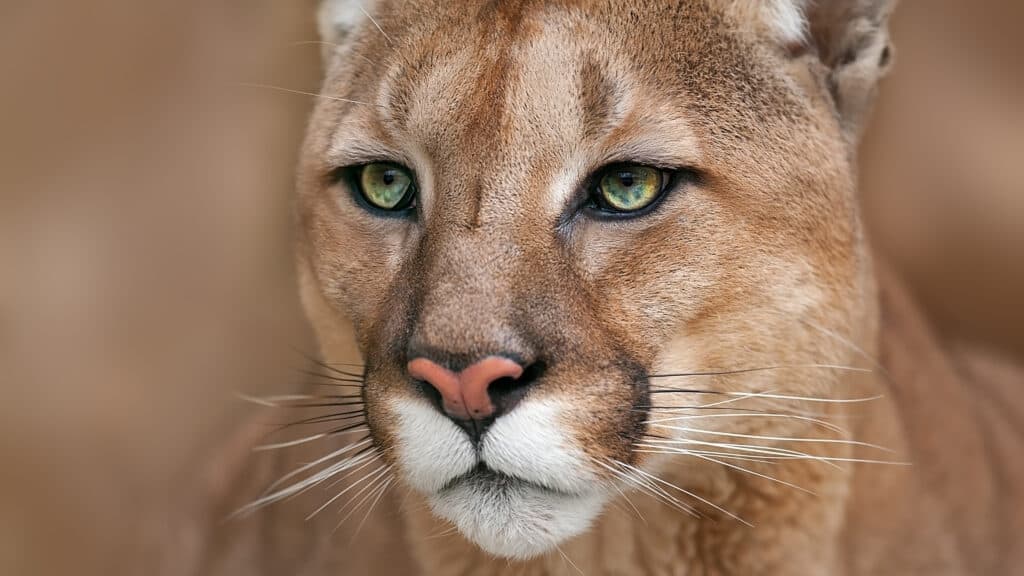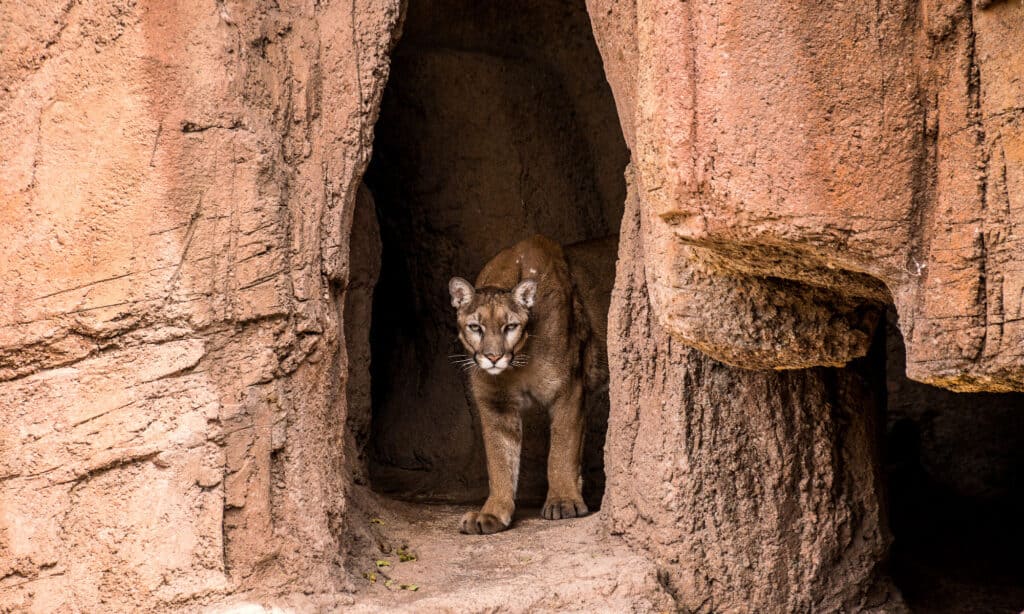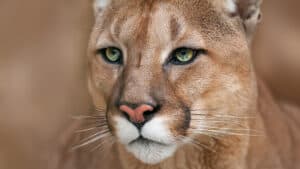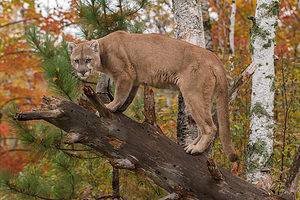It’s sad to note that cougars have been hunted to endangerment in North America. Strong, lithe and potentially ferocious, it is easy to understand that prior generations found the cougar an intimidating foe. Humans sought to reduce its numbers from fear for their own lives, or that of their sheep, cows and goats. As we seek to re-grow the cougar’s numbers, there are many places where the cougar is now a protected species. But this was much less the case back in 1979. That’s the year the largest cougar ever caught was hunted in British Columbia by a hunter named Douglas E. Schuk.
Cougars: Nearly the Biggest Big Cats in America
The Cougar (Felis concolor) is the second-largest feline on the North American Continent. They’re second only to jaguars, which every so often touch the Southwestern US. Also known as mountain lions, pumas, panthers and even catamounts, cougars are sleek, powerful, and hardy. They have been heavily hunted by humans throughout American history, and are now on the endangered species list. Like anything rare, this has made celebrities of those cougars who live in the capacious parks of the Hollywood area of Los Angeles. Like coyotes, these cougars roam into Hollywood neighborhoods at night and can be something of a nuisance. They can definitely be deadly to small or even mid-sized pets left unattended. But Los Angeles expressed an outpouring of grief at the recent death of P-22, a cougar who had been tagged by scientists and whose movements residents followed with fascination.
Yet the cougar is a large cat, a near-apex predator that for centuries has tangled with livestock, and even attacked human beings who strayed across its path. Though we have not successfully coexisted with these big cats, to the detriment of their numbers. Yet there is a tradition of hunting and capturing cougars with an eye to self-preservation. And the most intimidating such specimen was a cougar of record-setting size, captured all the way back in 1979.

Cougars usually grow from 5 to 9 feet in length.
©iStock.com/Nemyrivskyi Viacheslav
Typical Cougar Size vs. the Record-Setter
Here’s some frame of reference for just how big the biggest cougar ever caught was.
Cougars usually grow from 5 to 9 feet in length. Female cougars grow to the 100-pound range, whereas males can typically weigh up to 150 pounds. So try to imagine veteran hunter Douglas E. Schuk’s shock when, hunting Talayoko Lake in the snowy British Columbian woods in the late ’70s, he encountered an adult cougar that he would later learn weighed 276 pounds! Though hunting with a pack of well-trained dogs, Schuk noted that a cat of that size could easily kill one of his animals with a single swipe of his claw.
Prior Record Size Cougars of Note
Schuk killed the record-setting cat with a .308 rifle in a single shot. He hunted with hounds who held the cat at bay. Once his quarry was weighed and measured by the Boone & Crockett Club, it was found to outstrip the most recent world-record mountain lion, hunted the prior decade in Utah. The skulls of hunted animals are measured on a point system. Where the Utah cougar’s skull scored 16, Schuk’s Canadian mountain lion’s skull was a 16 4/16 (sixteen and four sixteenths).
This record was almost matched on a 1988 hunt in the Selway-Bitterroot Wilderness of Idaho. One Gene R. Alford embarked on a hunt that saw him alone in these wilds for over a month. Though the cat Alford bagged missed Schuk’s record by one sixteenth of an inch, the Boone and Crockett Club gave Alford a special award — the Sagamore Hill Award — because his hunt had shown such especial integrity, grit and what hunters call “fair chase”.
The very first record-setting cougar was hunted by none other than President Theodore Roosevelt, the great outdoorsman and preservationist president. An avid hunter so associated with bears that the child’s Teddy Bear is literally named for him, Roosevelt bagged an immense cat outside of Meeker, Colorado in 1901. It scored 15 12/16 (fifteen and twelve sixteenths) points — actually not so far off from the current 1979 record!

Mountain lion protections vary widely by US state.
©Susan E. Viera/Shutterstock.com
A Protected Species Today
Cougars were nearly wiped out in North America as human beings encroached ever further into their territory. Though protections for mountain lions vary widely from state to state, a majority of the 16 states in which cougars can still be found have passed some form of protection for these majestic, imposing wildcats. Cougar populations in the US are stable now, though obviously much lower than in the past. There are perhaps a few thousand cougars left in the wild.
Cougars require a large habitat to roam, which can present a challenge to those attempting to preserve their way of life. A speedy predator, it needs 13 times the space to roam that a black bear would, for instance. The upside? This makes mountain lions an “umbrella species”: protecting their habitat simultaneously protects that of countless other plants and animals.
The photo featured at the top of this post is © Evgeniyqw/Shutterstock.com
Thank you for reading! Have some feedback for us? Contact the AZ Animals editorial team.





